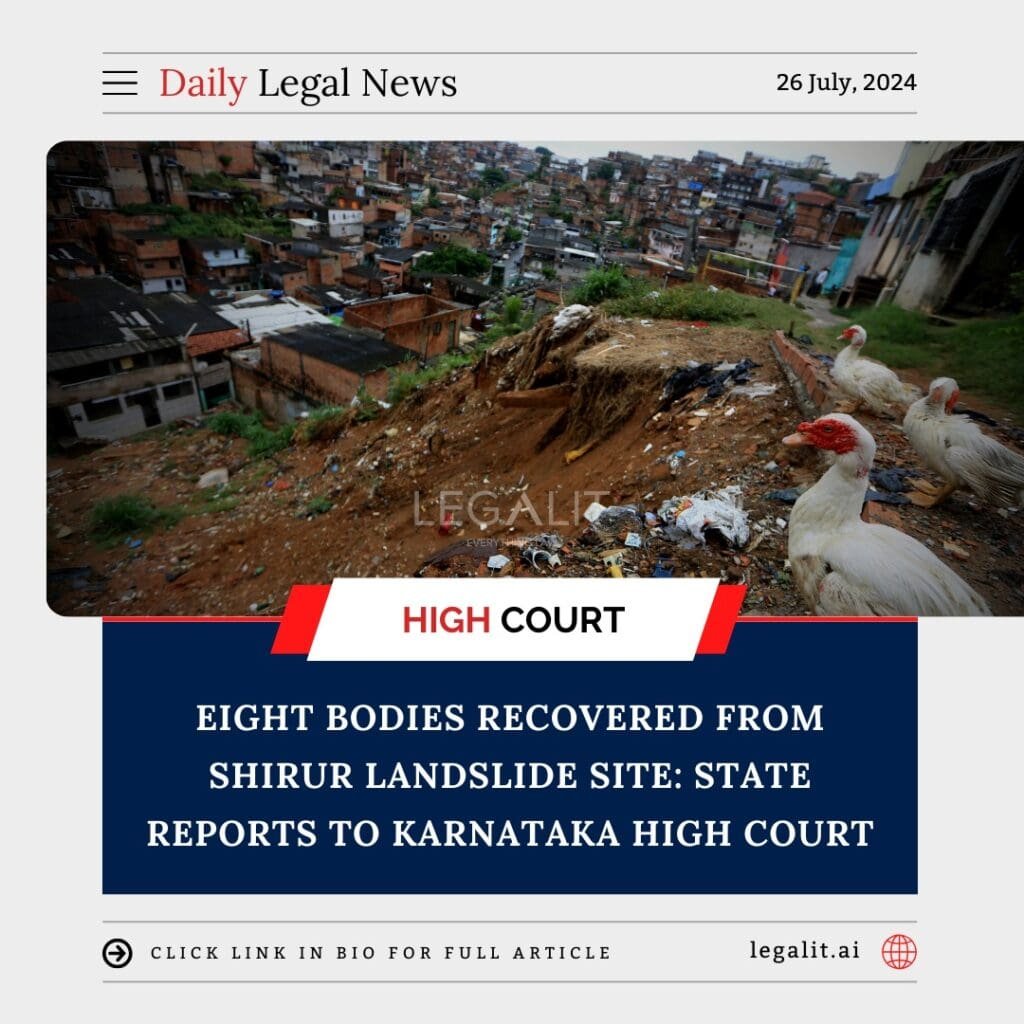
In a tragic development, eight bodies have been recovered from the Shirur landslide site, as reported by the state authorities to the Karnataka High Court. This disaster has highlighted the urgent need for enhanced disaster management and preventive measures in landslide-prone areas.
Background of the Landslide
The landslide occurred in Shirur, a region known for its hilly terrain and susceptibility to such natural disasters, especially during the monsoon season. Heavy rains triggered the landslide, causing massive destruction and burying several homes and individuals under the debris. The incident has brought attention to the vulnerability of certain areas to natural calamities and the importance of robust disaster preparedness.
Rescue and Recovery Operations
Following the landslide, immediate rescue operations were launched by state disaster response teams, local authorities, and volunteers. Despite the challenging conditions, including heavy rains and unstable terrain, the teams worked tirelessly to search for survivors and recover the bodies of the victims.
The state reported to the Karnataka High Court that eight bodies have been recovered from the site. Efforts are ongoing to ensure that any remaining individuals are found and to provide necessary assistance to the affected families. The rescue operations have also involved clearing debris, stabilizing the area, and assessing the extent of the damage.
Legal and Administrative Response
The Karnataka High Court has been closely monitoring the situation, demanding regular updates from the state authorities on the progress of the rescue and recovery operations. The court’s involvement underscores the importance of judicial oversight in ensuring that adequate measures are taken to address such emergencies and prevent future occurrences.
Implications for Disaster Management
The Shirur landslide incident has several implications for disaster management and preparedness:
- Enhanced Early Warning Systems: The disaster highlights the need for improved early warning systems in landslide-prone areas. Accurate weather forecasting and real-time monitoring can help predict such events and facilitate timely evacuations.
- Infrastructure and Land Use Planning: There is a pressing need to review and revise land use policies, especially in vulnerable regions. Building regulations must be enforced to ensure that constructions are resilient to natural disasters.
- Community Awareness and Training: Local communities should be educated about the risks of landslides and trained in basic disaster response techniques. This can significantly reduce the impact of such events and enhance community resilience.
- Strengthening Response Capabilities: State disaster response teams must be equipped with the latest technology and training to handle complex rescue operations efficiently. Collaborative efforts with national and international disaster management organizations can also enhance capabilities.
- Judicial Oversight and Accountability: The active involvement of the judiciary, as seen in this case, ensures that state authorities are held accountable for their disaster management policies and actions. It also promotes transparency and prompt response in the wake of natural calamities.
Moving Forward
In the aftermath of the Shirur landslide, the focus must be on comprehensive rehabilitation and support for the affected families. Immediate measures include providing financial aid, medical assistance, and psychological support to those impacted by the disaster.
Long-term strategies should aim at reducing the vulnerability of landslide-prone areas through sustainable development practices, effective risk assessment, and robust disaster management frameworks. The lessons learned from this tragic event should inform policy decisions and community practices to prevent future losses.
Conclusion
The recovery of eight bodies from the Shirur landslide site marks a somber moment in the ongoing rescue operations. The state’s report to the Karnataka High Court underscores the gravity of the situation and the need for urgent and sustained efforts to manage and mitigate the risks of natural disasters. As rescue operations continue and the state enhances its disaster preparedness, the hope is to build a more resilient and safer environment for all its residents.